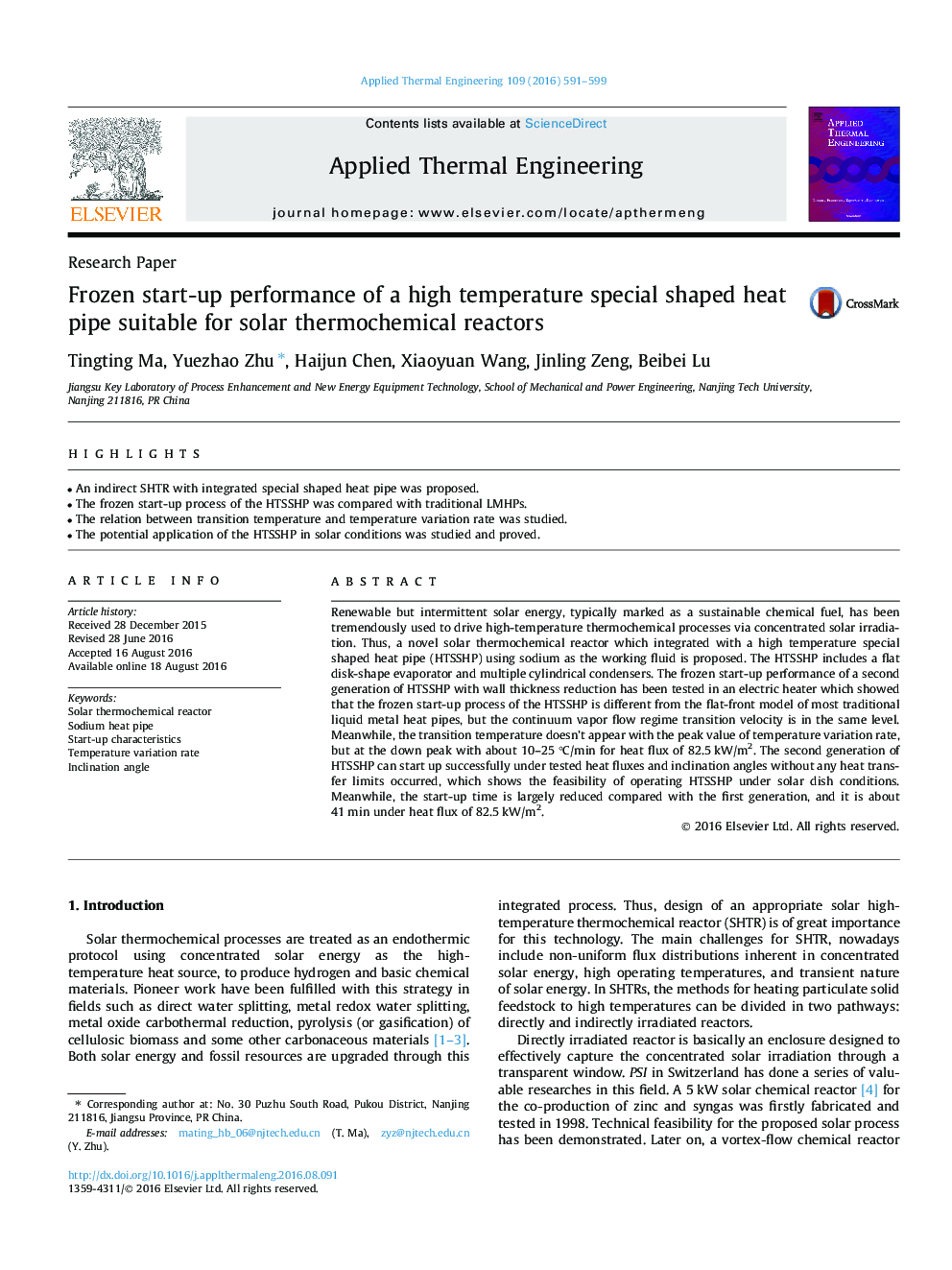| کد مقاله | کد نشریه | سال انتشار | مقاله انگلیسی | نسخه تمام متن |
|---|---|---|---|---|
| 6481185 | 1368130 | 2016 | 9 صفحه PDF | دانلود رایگان |

- An indirect SHTR with integrated special shaped heat pipe was proposed.
- The frozen start-up process of the HTSSHP was compared with traditional LMHPs.
- The relation between transition temperature and temperature variation rate was studied.
- The potential application of the HTSSHP in solar conditions was studied and proved.
Renewable but intermittent solar energy, typically marked as a sustainable chemical fuel, has been tremendously used to drive high-temperature thermochemical processes via concentrated solar irradiation. Thus, a novel solar thermochemical reactor which integrated with a high temperature special shaped heat pipe (HTSSHP) using sodium as the working fluid is proposed. The HTSSHP includes a flat disk-shape evaporator and multiple cylindrical condensers. The frozen start-up performance of a second generation of HTSSHP with wall thickness reduction has been tested in an electric heater which showed that the frozen start-up process of the HTSSHP is different from the flat-front model of most traditional liquid metal heat pipes, but the continuum vapor flow regime transition velocity is in the same level. Meanwhile, the transition temperature doesn't appear with the peak value of temperature variation rate, but at the down peak with about 10-25 °C/min for heat flux of 82.5 kW/m2. The second generation of HTSSHP can start up successfully under tested heat fluxes and inclination angles without any heat transfer limits occurred, which shows the feasibility of operating HTSSHP under solar dish conditions. Meanwhile, the start-up time is largely reduced compared with the first generation, and it is about 41 min under heat flux of 82.5 kW/m2.
Journal: Applied Thermal Engineering - Volume 109, Part A, 25 October 2016, Pages 591-599